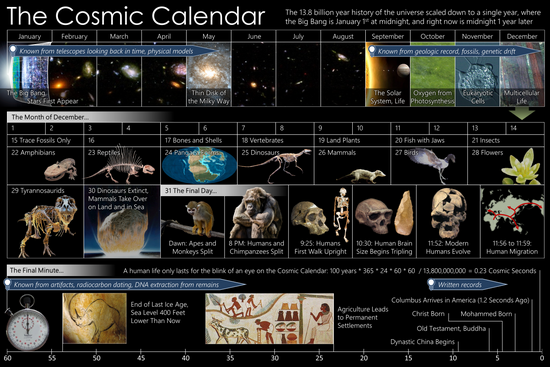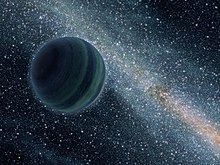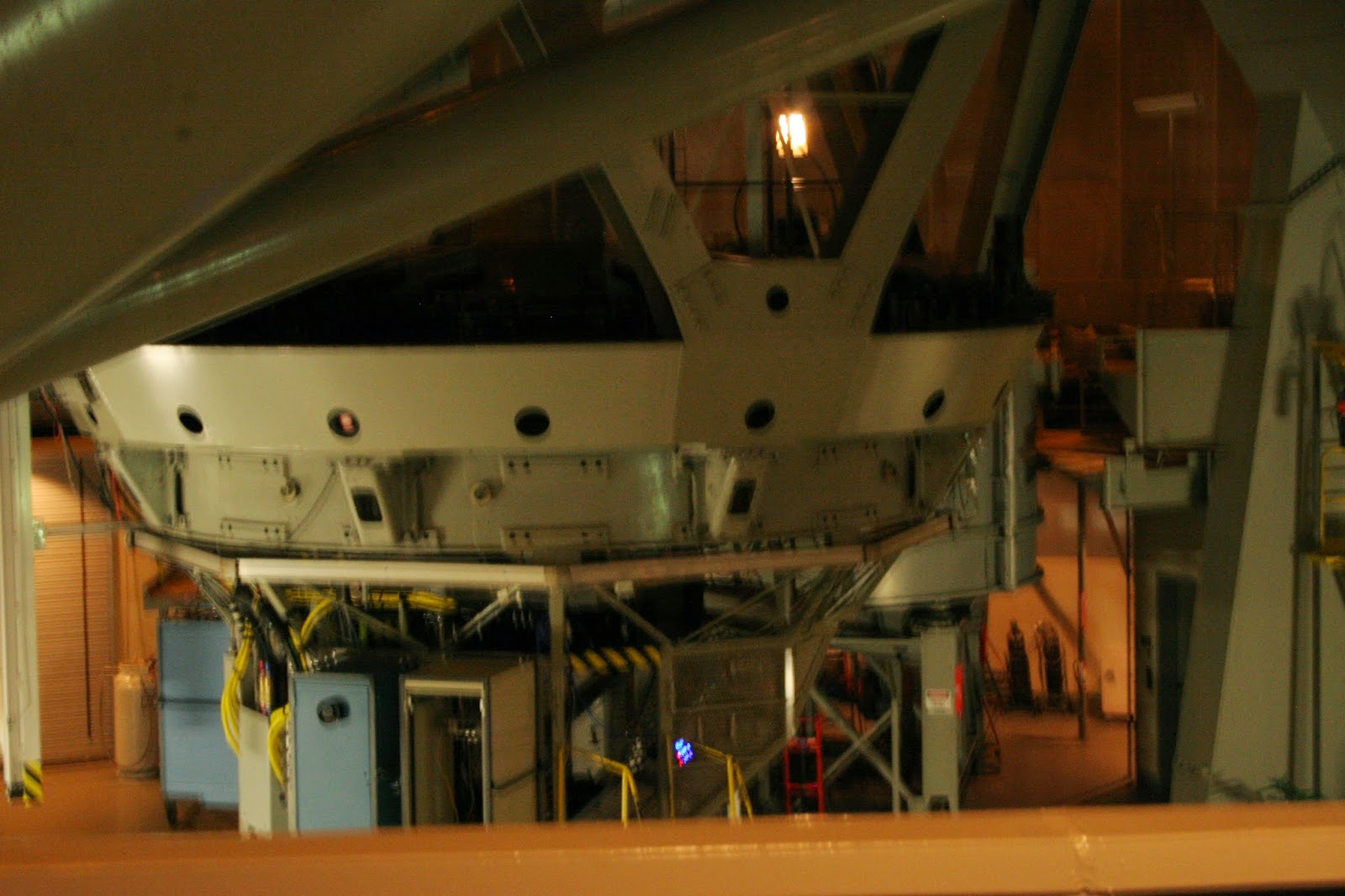The Vernal equinox will be in two days! Here's is a video that shows a time lapse of the Earth throughout the year. As you will see, during an equinox the shadow is almost perfectly cutting the Earth in half from the North pole to the South pole. This is because during an equinox the Earth is at a right ascension in which its tilt is neither pointing towards the Sun nor away from the Sun. Check out the video!
https://www.youtube.com/watch?v=LUW51lvIFjg
Tuesday, March 18, 2014
Field Trip to Palomar Observatory
This past Saturday, our professor took us on a little field trip to the Palomar Observatory. Here are q few pictures from the trip!
The first view of the Observatory heading up the main road.
Professor Siana leading the way.
Trying to place the size of the observatory into perspective.
Professor Siana looking right at home. He actually has spent a lot of his time here as a graduate student doing research.
Here is a picture of a statue of George Ellery Hale. He is the man that watched over the planning, construction and design of the telescope. Although he put in a lot of effort to get the telescope up and running, he did not live to see its commissioning. It is said that if you rub this statue's nose, you will receive good luck!
A tour guide showing us a diagram of the actual telescope.
Pictures of the actual Hale telescope. It is pointing straight upwards in its "rest position."
The is where the actual 200" mirror is held in the telescope. Unfortunately, we were not able to see the actual mirror.
Our class.
The cement slab our class is standing on is actually a replica of the mirror in regards ti size and weight. It was used as a dummy weight in order to calibrate the telescope while the real mirror was in the process of being made. The telescope is so precisely balanced that it only takes a .5hp motor to move and rotate the telescope.
Hope you enjoyed the pictures!
Saturday, March 15, 2014
Three Possible Theories in Which the Universe Dies.
https://www.youtube.com/watch?v=4_aOIA-vyBo
This is an animate video that explains three ways the Universe might die.
1.Big Rip
-The first of the three theories mentioned in the series is the Big Rip. This theory states that as the universe continues to expand and accelerate, particles will also accelerate. As the universe becomes bigger, it begins to accelerate faster. Eventually the universe is expanding faster than the speed of light. Galaxies begin breaking down to the most basic particles. As the universe continues to expand past the speed of light, particles will no longer be able to interact with one another and the universe will be dead.
2.Heat Death/Big Freeze
-Just like the first theory, the universe will continue to expand at the rate of that greater than the speed of light. The difference in this theory is that matter will stay intact instead of breaking down. Instead, matter will eventually come off as some sort or radiation. When the whole universe successfully finishes radiating, the universe is dead. They like to compare this to entropy stating that the end of the universe is the universe reaching maximum entropy.
3.Big Crunch and Big Bounce
-The third theory is the most interesting I believe. The theory states that dark matter, the apparent substance that expands the universe, will eventually deplete. When this occurs, gravity will eventually overcome all other forces. Blackholes will eventually combine together creating a super blackhole devouring everything including itself. Another Big Bang will occur and the universe will die again; this is known to be the Big Bounce.
Check out the video! It helps visualize everything!
This is an animate video that explains three ways the Universe might die.
1.Big Rip
-The first of the three theories mentioned in the series is the Big Rip. This theory states that as the universe continues to expand and accelerate, particles will also accelerate. As the universe becomes bigger, it begins to accelerate faster. Eventually the universe is expanding faster than the speed of light. Galaxies begin breaking down to the most basic particles. As the universe continues to expand past the speed of light, particles will no longer be able to interact with one another and the universe will be dead.
2.Heat Death/Big Freeze
-Just like the first theory, the universe will continue to expand at the rate of that greater than the speed of light. The difference in this theory is that matter will stay intact instead of breaking down. Instead, matter will eventually come off as some sort or radiation. When the whole universe successfully finishes radiating, the universe is dead. They like to compare this to entropy stating that the end of the universe is the universe reaching maximum entropy.
3.Big Crunch and Big Bounce
-The third theory is the most interesting I believe. The theory states that dark matter, the apparent substance that expands the universe, will eventually deplete. When this occurs, gravity will eventually overcome all other forces. Blackholes will eventually combine together creating a super blackhole devouring everything including itself. Another Big Bang will occur and the universe will die again; this is known to be the Big Bounce.
Check out the video! It helps visualize everything!
The Big Bang Theory (No, not the show.)
https://www.youtube.com/watch?v=wNDGgL73ihY
This is an animated informational video of the generally accepted Big Bang theory. The Big Bang is said to be the beginning of the universe. Scientists used to believe that the universe was infinitely big until modern science and technology were able to see that it is actually still expanding and perhaps accelerating. This phenomenal theory is very consistent with what we know as physics today. Check it out!
This is an animated informational video of the generally accepted Big Bang theory. The Big Bang is said to be the beginning of the universe. Scientists used to believe that the universe was infinitely big until modern science and technology were able to see that it is actually still expanding and perhaps accelerating. This phenomenal theory is very consistent with what we know as physics today. Check it out!
Friday, March 14, 2014
The Cosmic Calendar

The cosmic calendar is a tool used to help us visualize how much has happened since the beginning of time. To understand the cosmic calendar, cram all of time since the big bang until current time and scale it down to single calendar year. Major astronomical events that occur are described by dates of a year as a scale of actual time. What I find most interesting along with what blew my mind is that all of history that has ever been written down occurs at the last thirteen seconds of the year! All of modern science and technology beginning around the era of the American Revolution happens within the last second of the year! Such a hard idea to fathom....
source: http://en.wikipedia.org/wiki/Cosmic_Calendar
source: http://en.wikipedia.org/wiki/Cosmic_Calendar
Rogue Planets

This is an artist's depiction of a rogue planet. A rogue planet is a planet that is free floating in space unbounded to any orbit. Astronomers believe that some of these planets may have once been in orbit of a star as any other planet until they were ejected for any given reason. In order to find these rogue planets, astronomers must use different techniques from the ones they use to find exoplanets. This is due to dependency of the technique on periodic orbits of the exoplanets about stars. Two methods that astronomers use to find rogue planets are gravitational microlensing and direct imaging.
Source: http://en.wikipedia.org/wiki/Rogue_planet
Thursday, March 13, 2014
The Oort Cloud

This is a generated image of the Oort Cloud. The Oort Cloud, named after astronaut Jan Oort, is a hypothesized "cloud" of ice and dust particles that surrounds our solar system. It is said to have radius of about a light year with the being the center. Some astronomers argue that the matter composing the Oort cloud initially formed near the Sun but were eventually scattered to its current radius by giant planets due gravitational effects.
Source: http://en.wikipedia.org/wiki/Oort_cloud
Wednesday, February 12, 2014
Red Square Nebula
Alternative adaptive optics
http://youtu.be/KwjZkeLgGZQ
This is a video the explains the adaptive optics system of a Large Binocular Telescope. Rather than adapting the conventional method of using a laser to create a false star, a secondary mirror is used to warp the incoming light rays so that the image detector would have a clear view. It is said to be so successful that it produces clearer images than that of the Hubble space telescope. Check it out!
This is a video the explains the adaptive optics system of a Large Binocular Telescope. Rather than adapting the conventional method of using a laser to create a false star, a secondary mirror is used to warp the incoming light rays so that the image detector would have a clear view. It is said to be so successful that it produces clearer images than that of the Hubble space telescope. Check it out!
Friday, February 7, 2014
Scaled zoom!
Check this out! It's a video of a scaled zoom of the universe. It may help put into perspective the actual distance of how far some of the stars and galaxies that we measure are. http://www.youtube.com/watch?
Tuesday, January 14, 2014
Gravity Visualized: A demo by a physics teacher
Although gravity may be intuitive to some, this demonstration may help others see in a different light how gravity works. In the demonstration the professor uses a large sheet of Lycra, stretchy material often used for clothing or book covers, to represent spacetime. He uses different objects of different masses and diameters to show how each object affects spacetime and other objects.
http://www.youtube.com/watch?v=MTY1Kje0yLg
http://www.youtube.com/watch?v=MTY1Kje0yLg
Subscribe to:
Comments (Atom)
















